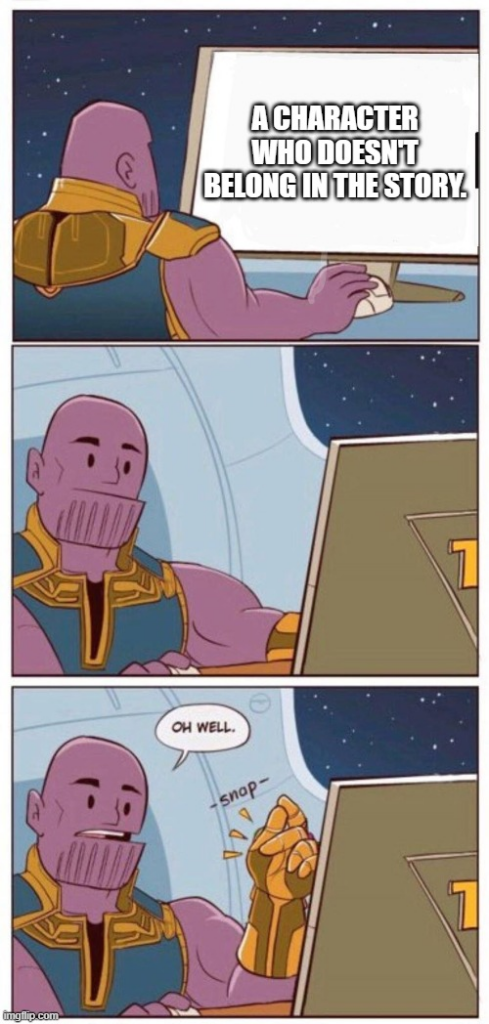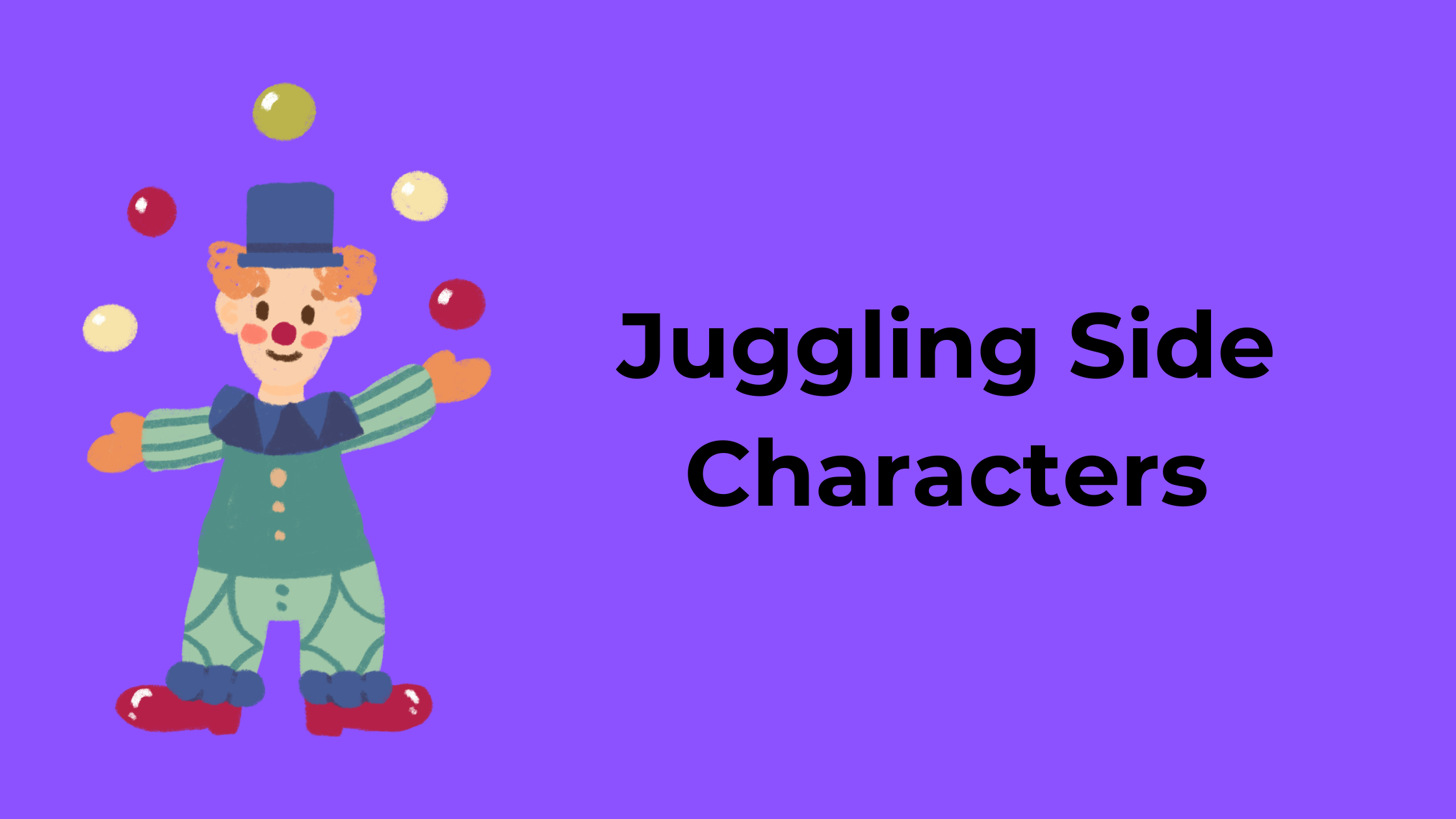Every novel needs some side characters. After all, the best way to make a character lovable is to show people who love them. However, some authors make the mistake of piling too many side characters into their novels and struggling to juggle all of them. But how do you know if a side character is necessary? How do you discard characters once they become irrelevant?

Deleting Side Characters
Occasionally, authors write in side characters that have great personalities but no relevance to the story. If any author gets the note that they have too many side characters, it would be wise for them to analyze each individual character, asking specific questions. Does each character affect the central conflict of the story? Do they impact any subplots? Are they important to the protagonist’s internal arc? Are they necessary for the antagonist’s story? If none of these things are true, removing the character from the story might be beneficial.

Back when I was a teenage writer, I faced this exact circumstance. At the time, love triangles were all the rage, so of course, I placed one in my novel. When I was editing the book, though, I realized that my two male love interests were essentially the same person, and one of them added pretty much nothing to the actual story. I didn’t want to, but I removed the unimportant love interest from the book. At the end of the day, the story was better without him.
Characters Once Necessary
On the other hand, there are times when a character is necessary to the story at the beginning, but they quickly grow insignificant. In this case, removing the character entirely would be a disservice to the story. Yet, keeping a character who no longer adds depth to the story is equally as harmful.

Luckily, writers aren’t stuck with these characters forever. There are ways to remove them from the story. Perhaps an alternative mission sends them away, as is often the case with Gandalf the Gray in The Lord of the Rings. Alternatively, the plot’s events may become too much for the character, and they could return home. Or they could have a big falling out with the protagonist and choose to leave because of that. The last resort is for them to die. Authors should only use this technique when the character’s death severely affects the protagonist. Dumbledore dies in Harry Potter because Harry no longer needs him as a mentor, but his death also propels Harry’s arc forward.

Subplot Characters
Sometimes, a character isn’t important to the main conflict, but they significantly affect a subplot. For example, some love interests don’t participate in a story’s central conflict for most of the book. Yet, their romance itself serves as a subplot.

Even subplot characters should have a purpose, though. They may be pivotal figures in the protagonist’s internal arc. Their story could tie to the novel’s theme. Or the subplot’s conflict could tie to the main plot by the end of the story. In the television show Stranger Things, the writers are excellent at juggling subplots. The characters always split off into groups, discover different things about the conflict, and join together by the end of the season. Eventually, each thread of the plot connects. Therefore, these subplot characters prove necessary to the overall story.

To Keep or Not To Keep?
Removing side characters proves difficult for many writers. As the creators of their stories, writers struggle to be objective. They believe that a side character is necessary because they created the character, and they don’t want to let them go. However, removing these extraneous characters benefits the author more than anyone else. If a side character is unimportant, writers often find themselves stuck writing scenes, wondering how this character can interject. Sometimes, the character will disappear from a scene entirely until the end, or they speak often but never say anything meaningful.

If an author can’t voice exactly how certain characters help their story, they should probably remove those characters. However, eliminating important side characters is a detrimental mistake. So when an author feels they’ve overrun their story with side characters, it is their responsibility to analyze their characters and decide who aids the story and who drags it down. After that, if they still can’t decide who to remove, it might be time for them to enlist a strong developmental editor for help.


View comments
+ Leave a comment